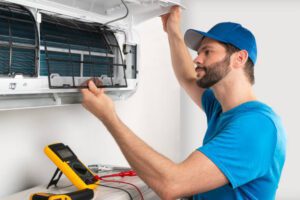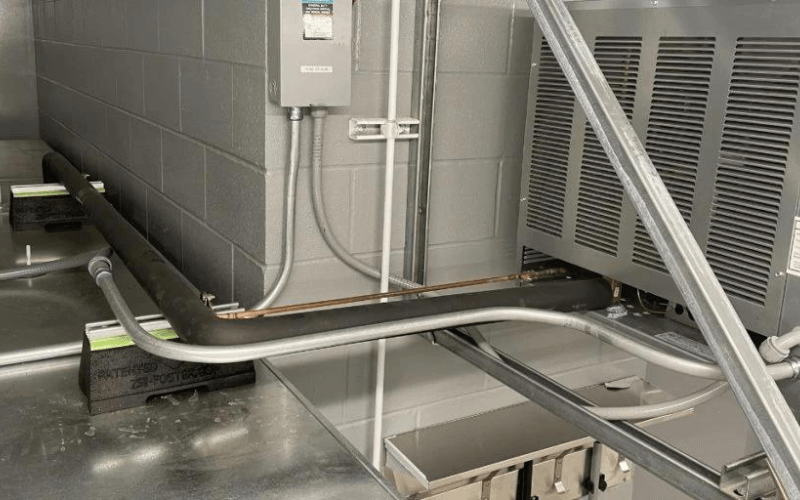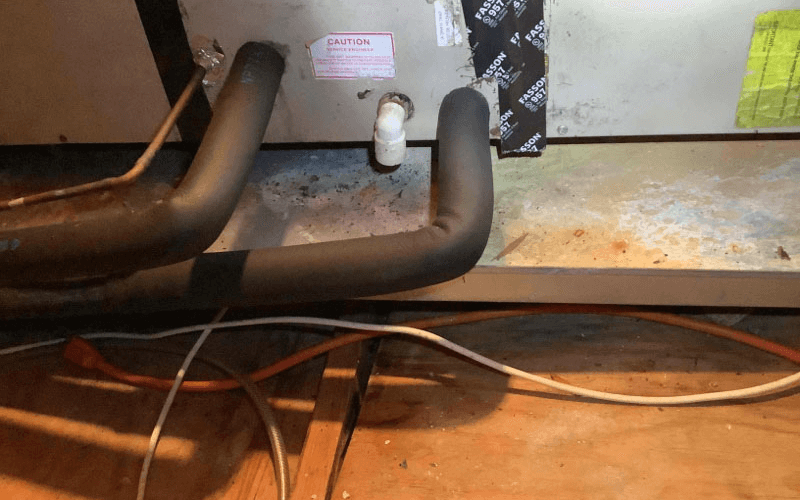Natural gas furnaces are the most common type of furnace in the United States, accounting for 48% of all homes. Heating is provided by natural gas. Although modern gas furnaces have a low failure rate, knowing the signs of a gas leak is still important so that you can take action if necessary. He uncovers four warning signs of a furnace Gas Leak that every homeowner should be aware of.
Table of Contents
ToggleAlso check: Furnace Won’t Shut Off Even When Thermostat Is Off
1. The Odor of Sulfur:
Although pure natural gas is odorless, gas manufacturers must add chemicals known as mercaptans to make leaks detectable by odor—most people associate Mercaptans with a sulfur-like or rotten-egg-like smell.
Check Your Furnace if your home has a persistent, unexplained sulfur odor. The air vents in your home may emit a faint mercaptan odor. In addition, if you have a large leak, you may only be able to smell it near the furnace.
2. Hissing Noise:
Natural gas is pressurized in homes’ and furnace heat exchangers’ pipes. When there is a leak, the pressure of the escaping gas often produces a distinctive hissing sound. Because fan motor noise can drown out leaks, it’s useful to hear them when the furnace is turned off.
Try the soap test if you hear a hissing sound but can’t figure out where it’s coming from. Turn off the furnace and run a cloth soaked in soapy water around the exposed gas pipes around the furnace and heat exchanger. Bubbles will appear in the soapy water wherever gas escapes.
3. Plants That Are Dying:
Natural gas is not directly toxic to plants but kills them by destroying the soil they grow. Natural gas depletes soil oxygen and promotes the production of hydrogen sulfide gas. This gas prevents plant roots from absorbing nutrients, causing plants to grow sparsely and eventually die. Indoor gas leaks can cause your houseplants to wilt or die, so if you use a gas furnace, keep an eye on their health. Leakage is possible. As a result of the gas escaping to the soil surface and damaging the grassroots, this frequently results in dead grass patches on the lawn.
4. Health Issues:
Natural gas is hazardous to living things because its carbon monoxide prevents blood cells from carrying oxygen throughout the body. Gas leaks can cause flu-like symptoms such as headache, fatigue, eye and throat irritation, and nausea. Dizziness, confusion, and possibly unconsciousness and death will result from more advanced gas exposure.
If you have pets in your home, you should know that they are more sensitive to breathing gas than humans and may exhibit symptoms sooner. You should act immediately if you feel unusual behavior, such as lethargy, vomiting, or difficulty walking. Evacuate the house and notify your gas company so that Technicians can inspect it for leaks.
Physical Symptoms Associated With Gas Leaks:
If you and your family leave a gas leak in your Somerville home unattended for an extended period, you and your family may be at a higher risk of developing several health problems.
- Difficulty breathing is one of the symptomatic symptoms.
- Increased sleepiness or fatigue
- Flu-like symptoms such as nausea and headaches
- Ear, nose, and throat irritation
- Mood changes, including depression
- Nosebleed
- chest pain
- loss of appetite
- tinnitus
A gas leak can also harm your pet’s health by causing them to become confused, lethargic, or even vomit.
A gas leak can cause your pet to struggle to breathe, turn red, and tear. It can sometimes transform into an eye. If you notice any gas leak signs, you should take action immediately.
What To Do If You Have A Gas Leak In Your Home:
A gas leak is extremely dangerous and necessitates immediate action to protect you and your family. If you suspect a gas leak in your home, take the following precautions:
Also check: How Does an Electric Furnace Work?
Evacuate:
Gather all pets and family members and leave your home as soon as possible. When you leave the house, always leave all doors open.
Call 911:
Once you and your family have been safely evacuated, dial 911, your local fire department, or the emergency number for your utility company for immediate assistance. Do not use the phone inside your home because it has the potential to ignite the gas.
Wait:
A certified inspector will come to your home to find and repair gas leaks so you can return home safely. When you receive word that you are safe, you can return home.
Conclusion:
Knowing how to recognize and respond to the signs of a gas leak in your furnace is critical to the safety of everyone in your home. Keep these gas leak warning signs in mind. Contact K2 Heating and Air Conditioning immediately if you suspect your heating or air conditioning system is leaking or has other issues.
FAQs
How can you tell if your furnace is leaking?
Stains of Soot or Brown/Yellow Color Around the Leaking Appliance Solid fuel fires burn at a lower temperature than usual. The Smell of Gas (carbon monoxide is odorless, but a leakage may be accompanied by exhaust gases you can smell) Stale or stuffy air
What are the most common signs of a gas leak?
Sulfurous odor or rotten eggs near a gas line, a hissing or whistling sound near a gas line, a white cloud or dust cloud bubbles in the water
Is it normal to smell gas coming from the furnace?
It is unusual to smell gas near a furnace unless the unit is defective. Don’t be alarmed if you notice a faint gas odor near the unit while it is running. When running, gas furnaces can occasionally emit trace amounts of gas.
Can my gas furnace cause carbon monoxide poisoning?
When you turn on your furnace, make sure no poison gas escapes. When winter temperatures drop, your furnace can become a silent killer. Carbon monoxide is produced by gas and oil-burning furnaces (CO). CO is an odorless, invisible poison gas that kills hundreds of people yearly and sickens thousands more.
Is it possible to get rid of carbon monoxide by opening windows?
Opening a window will likely slow but not stop carbon monoxide poisoning. Most windows simply don’t allow enough airflow to get rid of the poisonous gas, and it could take four to eight hours for the CO to dissipate completely.





















